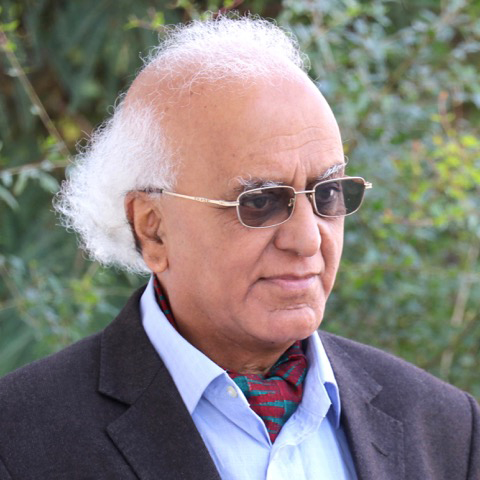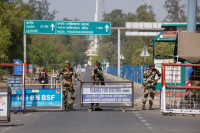Columns
Nepali vision of cinema
The term ‘Nepali cinema’ has continued to embody hopes and ambitions for change.
Abhi Subedi
The story of making ‘Nepali cinema’ as a matter of national significance and vision is not very old. I begin with an interesting and humble story. In the early sixties, there was a decision to make a film featuring a famous Bollywood film star of Nepali origin named Mala Sinha. It appears to have triggered
the imagination of important people of Nepal, including the powerful King Mahendra, who, as the notes of Nepali songwriter and film director Chetan Karki reveal, even edited the language of the film Maitighar (the parents’ house). Its meaning in the film is that the Nepali Bollywood actress Mala Sinha was visiting the land of her parents. Maitighar was released in 1966, two years after the release of what is projected as the first full-fledged Nepali film, Aamaa or mother, that is tinged with a sense of pride and celebration.
The desire to link Nepali film with Bollywood was very strong. This impulse has been associated with a sense of power, as we can see from King Mahendra’s interest. In this connection, evoking music was rightly considered an essential part of the film. The wish to hear the voices of famous Bollywood playback singers is materialised in this film. This is an interesting subject of Nepali cinema that requires further discussion. The playback song “pranabhanda pyaro mero maitighar” or ‘my parents’ house dearer than life’ sung by Lata Mangeshkar, Asha Bhosle and Usha Mangeshkar to the music of Jayadev has become familiar and famous in Nepal. Besides them, Manna Dey and Geeta Dutt are other notable Indian singers. The playback singing of Nepali singers Prem Dhoj Pradhan, CP Lohani and Aruna Lama adds to the sense of national celebration in this film. Mala Sinha married the Nepali actor associated with the film, CP Lohani, who died last year.
This story shows how Nepali cinema in different circumstances has represented “The Secret Politics of Our Desires” (1998), an eloquent title of a book of ideas and studies about the cinema of South Asia, edited with an introduction by the scholar and writer Ashis Nanday. In the discussion, he shows how cinema triggers the fantasies of Indian viewers. The term ‘Nepali cinema’ has continued to embody hopes and ambitions for change. However, it has not always successfully projected the story of the search for something new in people’s lives. Though Nepali cinema does not have a long history and is working hard to expand its sphere, it represents the ‘secret politics of desires’ by bringing them to light through various experiments.
I have some associations with individuals and activities related to cinema through theatre and academics. In retrospect, I realise that I haven’t written much about cinema even though I wrote a book and articles about theatre. But I do get invited for discussions about cinema or movies on different occasions. In Nepal, theatre and cinema have traversed some common paths since the last century. They are moving closer in recent times for a crucial reason. Several talented theatre artists and directors have begun playing roles in cinemas, directing and producing. Though the transfer from one medium to another is not smooth and easy, it has become an essential factor that has diversified cinema’s themes, if not drama.
I want to begin with some recent events. I attended two events related to cinema and film studies recently. One was a Faculty Board meeting of Kathmandu University, where a talented young scholar introduced an MA-level film study programme for approval. I was happy to see that. Young scholars and dedicated people are also conducting smaller cinema studies programmes. My erstwhile student Shishir Upreti of Film College, who is taking up the cudgel to expand and introduce, is one such example.
The other event was the invitation I received to participate in a discussion about a cinema titled jar, which is a Nepali term for a person who runs away with somebody else’s wife. Jar is slightly different from a paramour as the secret relationship between a married woman and a man becomes loud as it triggers social and legal responses. The husband of the woman could kill his wife’s lover as allowed by law in Nepal up until the early phase of the Rana Rule that began in 1846. This film in question is based on the true story written by the famous Nepali writer of Darjeeling, the late Indra Bahadur Rai.
In the story, the offended husband of the woman, who is running away with another man, meets them near the border with India. A change of heart or reversal happens when the husband announces that he has changed his mind and would treat them as his sister and her husband. He gets them married with green grass and asks them to return home. But the man and the woman pointing at an impromptu bridge say their exilic condition or the muglan life begins from that point onwards, as the doors to the country are closed for them.
My argument is that there is no limitation in the choice of the motif for making a film. I want to dwell on one film as an example. In this film, directed by Phurba Chiring Lama and starring the famous theatre artist Saugat Malla, Anup Bikram Shahi and Gitanjali Thapa, conditions of existence converge in the true story. It is a strange melange of history, memories and reality. Nepali filmmakers, today, are trying to find such imagery and symbolism that they want to use more than ever. The filmmakers and theatre directors are interested in exploring beyond what the anthropologists call the liminal lines. Nepali filmmakers are getting interested in the invisible borders; the idea of transcending limitations draws them. But their options are several. This aspect of discussions is related to the very production of films that cover the cultural and anthropomorphic spaces and lives, as in the films of Min Bham, to take one example. I must confess I am not a great filmgoer. I see some completely and slip out at the intervals in others.
We see three strands of cinema in Nepal. The first is continuing filmmaking by exploring native motifs. The second is starting different practices of filmmaking by using various resources. The third is opening studies at universities. All strands should meet to develop the versatile genre and promote studies of cinema.




 18.12°C Kathmandu
18.12°C Kathmandu















